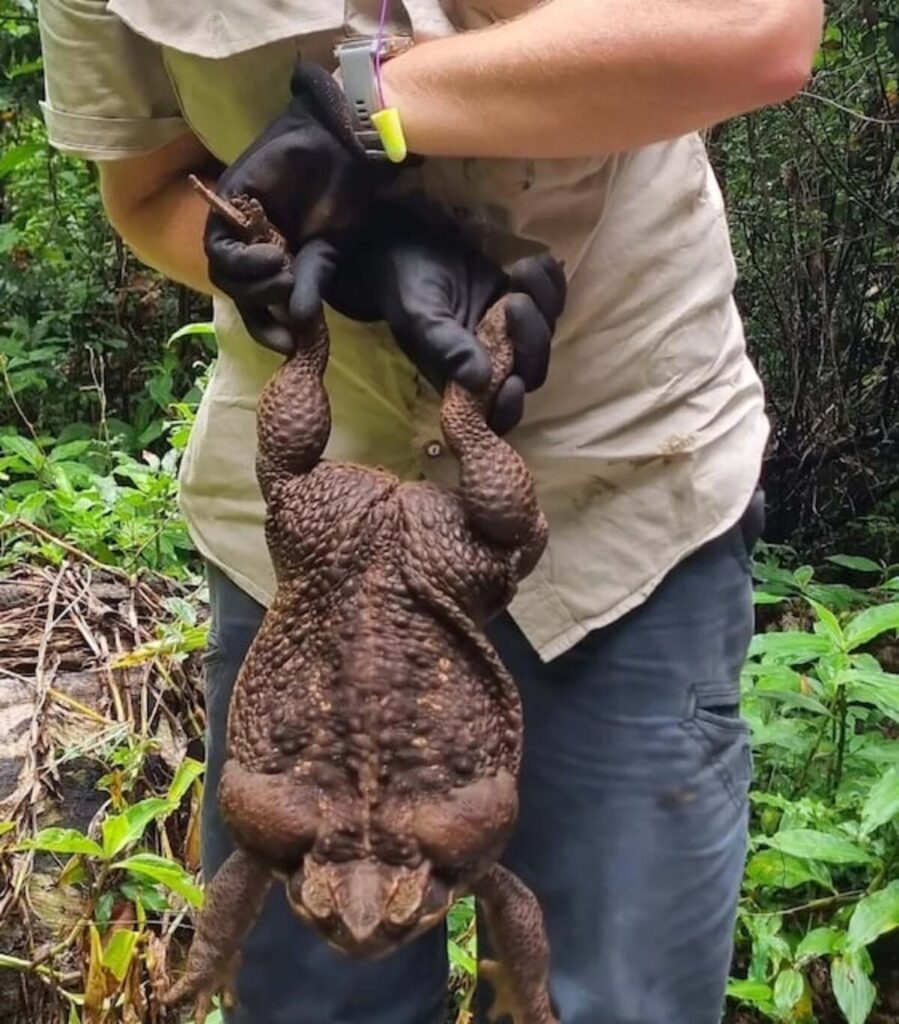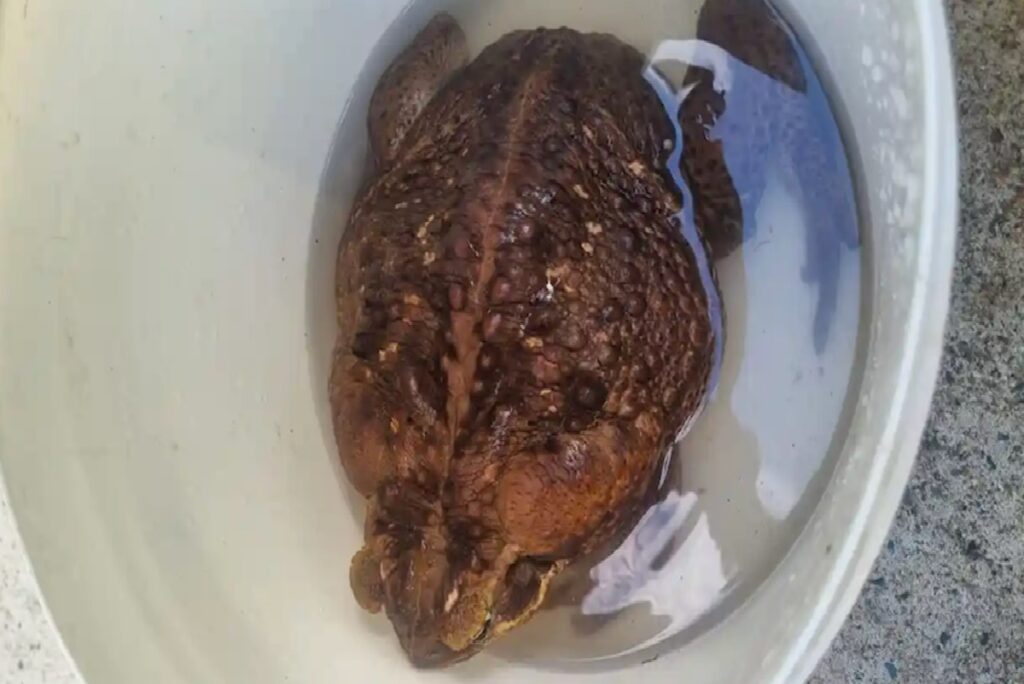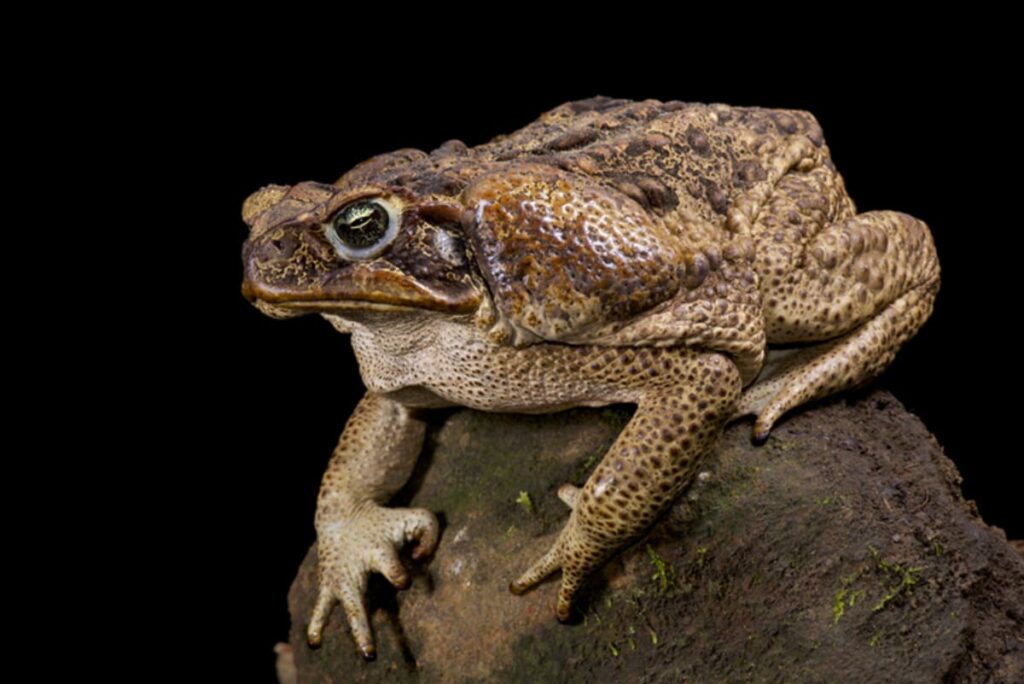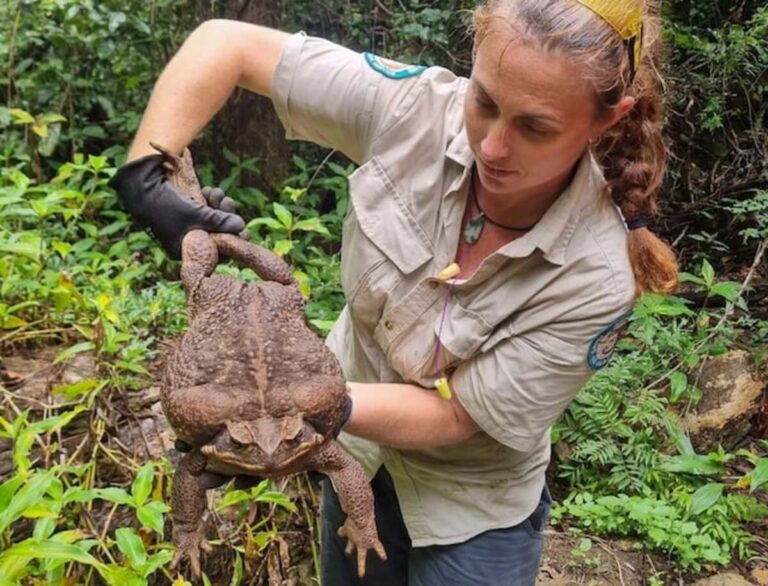In the vast expanse of Australia’s Queensland state lies the Conway National Park, a sanctuary teeming with diverse wildlife. Recently, amidst its lush greenery, Australian forest rangers stumbled upon an astonishing find: a gargantuan cane toad.
Kylee Gray, a wildlife protection officer, couldn’t believe her eyes when she encountered the colossal amphibian. “I bent down and grabbed the toad. I was astonished by its size and weight,” she recounted to the Australian Broadcasting Corporation.
A Specimen Beyond Compare

Dubbed “Toadzilla” by the media, this remarkable specimen weighed in at a staggering 2.7 kilograms, surpassing the previous record holder in the Guinness World Records by 50 grams. To put it in perspective, Toadzilla was six times larger than its counterparts.
According to Gray, the cane toad had developed a voracious appetite, feasting on insects, reptiles, and small mammals. “A cane toad of this size eats anything that can fit into its mouth,” she explained.
The Invasive Cane Toad Species

What many may not realize is that the cane toad, also known as the bufo toad or sugar cane toad, is classified as an invasive species in the Land Down Under.
Originally introduced to Queensland in 1935 to combat beetle infestations, these toads have now become a menace to local wildlife. Their rapid reproduction rate and toxic secretions pose a significant threat to the ecosystem.
Female cane toads are prolific breeders, laying anywhere between 25,000 to 35,000 eggs in a single breeding season. Their toxic skin secretions have detrimental effects on predators like lizards, snakes, mice, and even fellow frogs.
Decision to Euthanize

Given the ecological risks posed by Toadzilla and its invasive species status, the decision was made to euthanize the giant cane toad. However, its journey doesn’t end there. Gray mentioned that Toadzilla would be handed over to the Queensland Museum for further study.
While the discovery of Toadzilla may be fascinating, it serves as a stark reminder of the ongoing battle against invasive species and the importance of biodiversity conservation efforts in preserving fragile ecosystems.






